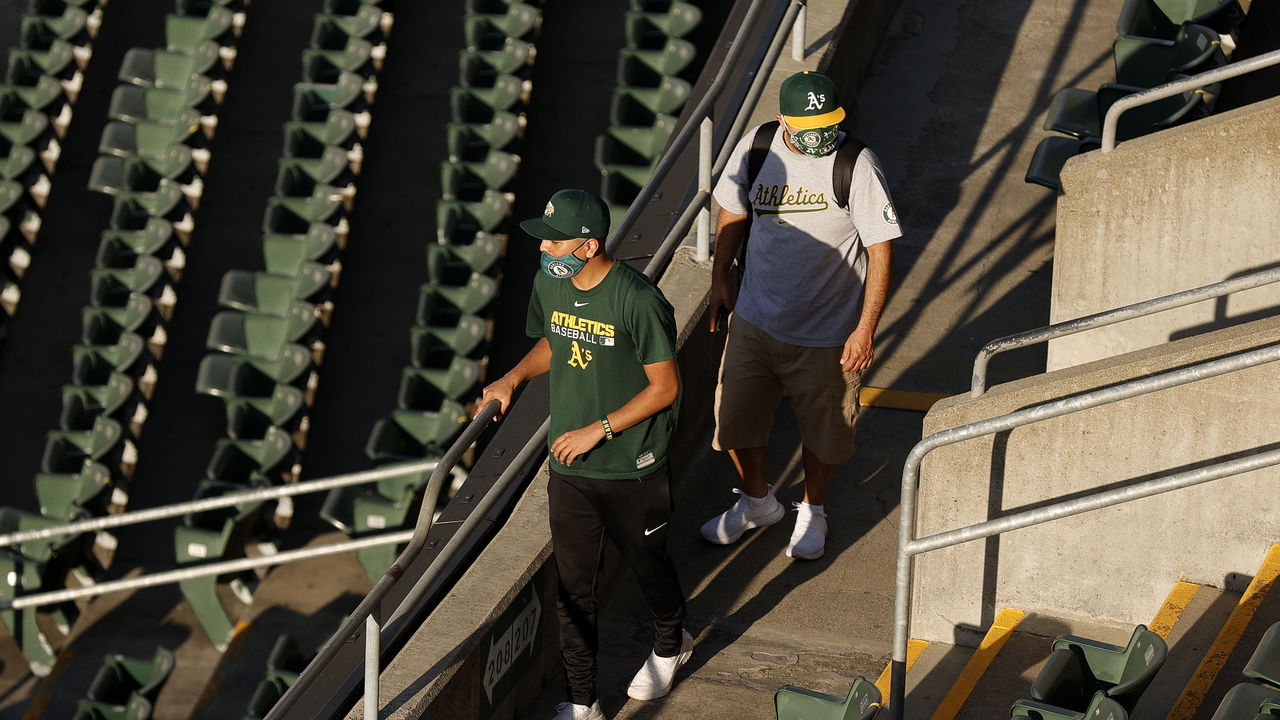What April attendance reveals about MLB's worrying trend
MLB avoided the worst outcomes of losing regular-season games to the lockout, but the sport's overall attendance trends are still pointing downward.
While no games were lost, the lockout generated significant negative publicity. That's nothing new. Attendance has declined after every MLB work stoppage, including a 20% drop in 1995 after the strike. MLB didn't return to its pre-strike attendance levels until 2006. Labor disputes turn off fans.
Regardless of stoppages, though, there remains a gradual, continued decline in MLB attendance. After peaking at 79.4 million fans in 2007, attendance generally declined year over year to 68.5 million fans in 2019, the last full season before any pandemic-related issues. That's a 14% decline - nearly 11 million lost tickets.
While ticket prices, pace of play, inflation costs, COVID-19 fears, cheap owners, and other at-home entertainment options might all conspire to keep fans away, attendance slippage has been more pronounced in baseball than in other major North American sports.
Baseball might be dealing with some of the issues that caused early-season attendance declines in the NBA and NHL, but those sports haven't endured steady, longer-term drops like MLB over the last 15 years, according to Statista. The NFL, meanwhile, set an attendance record this past season, exceeding 18 million.
So does MLB's April attendance offer any clues for the rest of the season?
April attendance was down 3.2% compared to 2019, according to an analysis of Retrosheet data by Baseball Reference. That's about 832 fewer fans per game across the league. Even after excluding the Oakland Athletics - who are playing in a nearly empty stadium on weekdays - attendance per game is down 2.3%.
The Oakland A's announced an attendance of 2,488 fans at Monday afternoon#39;s game, the lowest since Sept. 9, 1980. 😬 https://t.co/bgeIjPnej0 pic.twitter.com/lkS1UVDfNo
— theScore (@theScore) May 3, 2022
The April average of 25,900 fans per game marks the first time since 2010 that MLB contests in that month averaged fewer than 26,000 fans.
And it can't all be chalked up to the weather: The average game-time temperature for every team's first 25 outings this year was 69.6 degrees Fahrenheit compared to 60.8 in 2019.
The distribution of games between strong and weak attendance markets was relatively even in April. The best (Los Angeles Dodgers) and worst (A's) teams each had nine home games. But the Tampa Bay Rays' weak market in St. Petersburg had 15 home dates, while the Astros' strong market in Houston only had six.

The good news for MLB is perhaps that the bad news wasn't worse.
Because the sport avoided lost games, it didn't receive the blowback that followed previous labor fights. But if this decline holds, MLB could be on a pace for full-season attendance numbers not seen regularly since the late 1990s. The last time MLB teams averaged fewer than 28,000 fans a game for a full season was 2003. April attendance from 2010-19 was generally about 4.4% below the full-season average, however, so it remains to be seen if the league reaches 27,000 fans a game this season.
MLB endured seven straight years of declining attendance even before two pandemic-impacted campaigns. After recording its worst April numbers since 2010, that suggests the sport is headed toward another full-season decline.
Though attendance is down overall, it's worth noting more teams (16) saw an increase in April than a decrease (14).
Oakland's attendance has plummeted, with ownership dismantling yet another competitive club and using the threat of moving to Las Vegas to leverage a new ballpark. But the Blue Jays' attendance in Toronto is up more than 11,000 a game compared to 2019.
It may seem counterintuitive that Cincinnati's numbers are up, but the Reds were on the fringes of playoff contention last season, which could have boosted winter ticket sales. The bulk of Cincinnati's offseason sell-off, which has contributed to its dismal start, didn't happen until the lockout ended in early March.
The Detroit Tigers, who have also started poorly despite offseason hopes of improvement, may have seen a sales boost in April as Miguel Cabrera chased 3,000 hits.
What can MLB do to reverse its long-term trend? The league is interested in speeding up the game through a pitch clock and creating more action on the field, though deadening the ball isn't helping. What's clear is MLB has already lost nearly 11 million tickets sold since 2007, and April suggests that trend may continue.
Travis Sawchik is theScore's senior baseball writer.